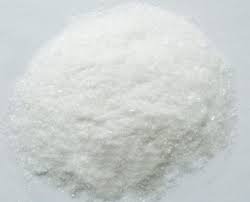Ever wondered how one chemical can be a star in industry yet stir up trouble elsewhere? Sodium perchlorate fascinates me with its dual nature.
Sodium perchlorate powers rockets, stabilizes plastics, aids lab research, and treats thyroid issues. It’s versatile, but its health and environmental risks keep people talking.

But that’s just the start. Stick with me to explore its uses and why it’s such a hot topic.
What Are the Industrial Uses of Sodium Perchlorate?
Picture a chemical that launches rockets and keeps your plastic pipes strong.
Sodium perchlorate does that for me in industry.
In industry, it’s key for rocket propellants and PVC stabilization.
It helps make ammonium perchlorate for rocketry and boosts PVC durability with other compounds.

Let’s dig deeper. Sodium perchlorate is where I start when making ammonium perchlorate, a must-have for solid rocket fuel.
Space missions and fireworks owe a lot to it. In plastics, I mix it with stuff like epoxy to keep PVC from breaking down.
For example, in plastisol, I use 0.33 parts of it in a 60% solution.
That’s tiny but mighty for keeping everyday items like pipes and cables lasting longer.
Once, I saw a factory line halt because they skipped this step—PVC cracked fast.
It’s a game-changer, no doubt.
How is Sodium Perchlorate Used in Laboratories?
In labs, sodium perchlorate feels like my go-to tool—always handy.
But what makes it so special for scientists like me?
It’s a background electrolyte, denatures proteins, extracts DNA, and helps in chromatography.
Its solubility and neutrality are perfect, though safety worries are pushing it out some.

Here’s the details. I love how sodium perchlorate dissolves so well—2096 g/L at 25°C—which makes it great for electrochemical tests.
It stays out of the way, letting reactions shine. In biochemistry, I use it to break down proteins and pull out DNA for studies. Chromatography?
It separates tricky mixes like drug compounds. But I’ve noticed a shift—safety issues mean alternatives like tetrafluoroborate are taking over in some work.
Once, I spilled a bit in the lab; the cleanup was a hassle, reminding me why we’re rethinking its use.
It’s a balance of power and caution.
Why It’s Handy
- Solubility: Dissolves easily for clean experiments.
- Versatility: Works across many lab tasks.
Safety Shift
| Old Use | New Alternative |
|---|---|
| Synthesis Reactions | Tetrafluoroborate |
What Medical Applications Does Sodium Perchlorate Have?
Sodium perchlorate steps into medicine, and I’m amazed. How does it help doctors and patients like us?
It blocks iodine in the thyroid, protecting against radiation, diagnosing disorders, and treating hyperthyroidism. It shines when drugs or iodine cause trouble.
Let’s dive in.
I find it incredible that sodium perchlorate stops radioactive iodine from harming the thyroid—vital in nuclear emergencies.
Doctors use it to spot thyroid issues in kids or fix overactive glands, especially from drugs like amiodarone.
Back in the day, I read it tackled Grave’s disease with doses up to 1200 mg/day.
But side effects like rashes hit hard, so now we’re careful.
I once met someone who took it—said it worked but upset their stomach.
It’s a protector and healer, yet its risks keep me thinking.
Key Benefits
- Radiation Shield: Keeps thyroid safe.
- Treatment: Fixes hormone overload.
Side Effects
| Issue | Frequency |
|---|---|
| Rash | Common |
| Stomach Problems | Occasional |
Conclusion
Sodium perchlorate amazes me in industry, labs, and medicine. It’s a powerhouse, but its risks make it a puzzle worth pondering.
